Weiye Li
Approximate Maximum Likelihood Inference for Acoustic Spatial Capture-Recapture with Unknown Identities, Using Monte Carlo Expectation Maximization
Oct 06, 2024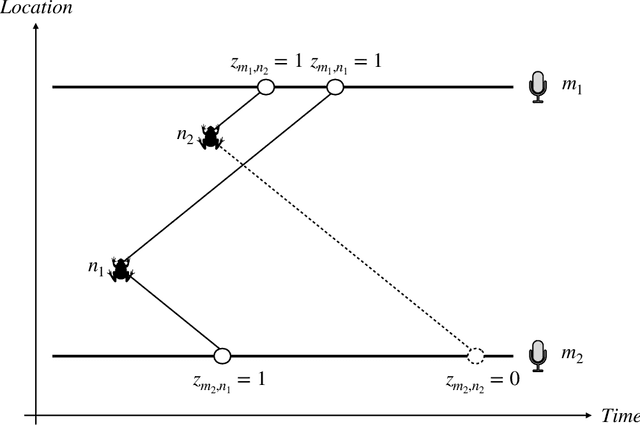

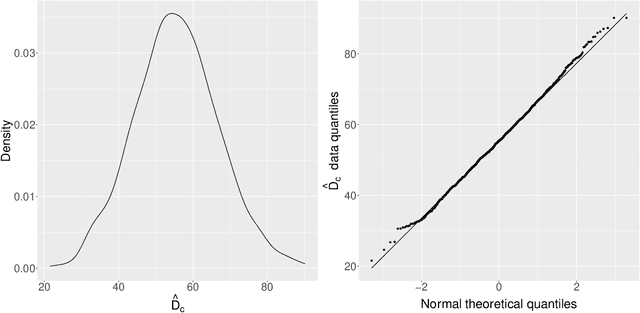
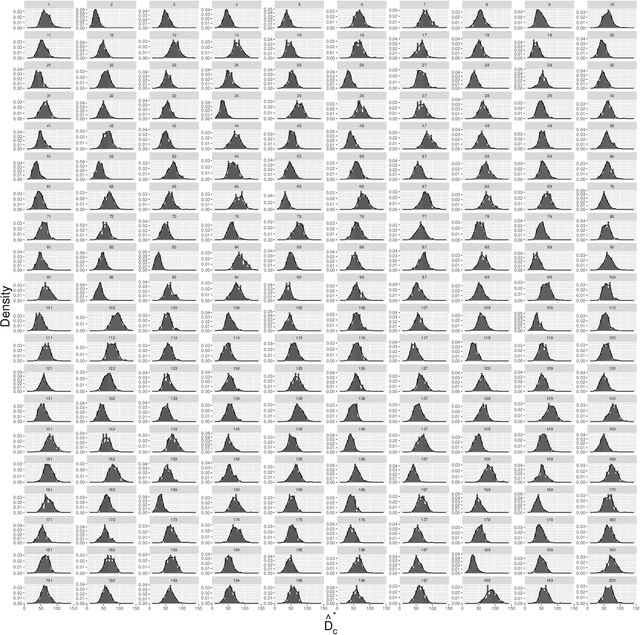
Abstract:Acoustic spatial capture-recapture (ASCR) surveys with an array of synchronized acoustic detectors can be an effective way of estimating animal density or call density. However, constructing the capture histories required for ASCR analysis is challenging, as recognizing which detections at different detectors are of which calls is not a trivial task. Because calls from different distances take different times to arrive at detectors, the order in which calls are detected is not necessarily the same as the order in which they are made, and without knowing which detections are of the same call, we do not know how many different calls are detected. We propose a Monte Carlo expectation-maximization (MCEM) estimation method to resolve this unknown call identity problem. To implement the MCEM method in this context, we sample the latent variables from a complete-data likelihood model in the expectation step and use a semi-complete-data likelihood or conditional likelihood in the maximization step. We use a parametric bootstrap to obtain confidence intervals. When we apply our method to a survey of moss frogs, it gives an estimate within 15% of the estimate obtained using data with call capture histories constructed by experts, and unlike this latter estimate, our confidence interval incorporates the uncertainty about call identities. Simulations show it to have a low bias (6%) and coverage probabilities close to the nominal 95% value.
Artwork Protection Against Neural Style Transfer Using Locally Adaptive Adversarial Color Attack
Jan 18, 2024



Abstract:Neural style transfer (NST) is widely adopted in computer vision to generate new images with arbitrary styles. This process leverages neural networks to merge aesthetic elements of a style image with the structural aspects of a content image into a harmoniously integrated visual result. However, unauthorized NST can exploit artwork. Such misuse raises socio-technical concerns regarding artists' rights and motivates the development of technical approaches for the proactive protection of original creations. Adversarial attack is a concept primarily explored in machine learning security. Our work introduces this technique to protect artists' intellectual property. In this paper Locally Adaptive Adversarial Color Attack (LAACA), a method for altering images in a manner imperceptible to the human eyes but disruptive to NST. Specifically, we design perturbations targeting image areas rich in high-frequency content, generated by disrupting intermediate features. Our experiments and user study confirm that by attacking NST using the proposed method results in visually worse neural style transfer, thus making it an effective solution for visual artwork protection.
Siamese Networks with Location Prior for Landmark Tracking in Liver Ultrasound Sequences
Jan 23, 2019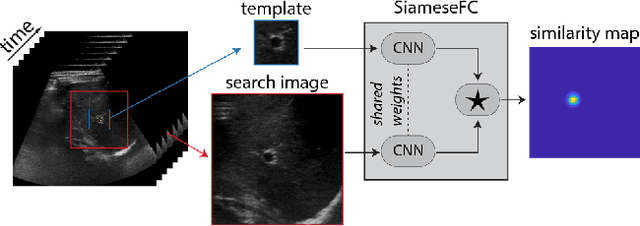
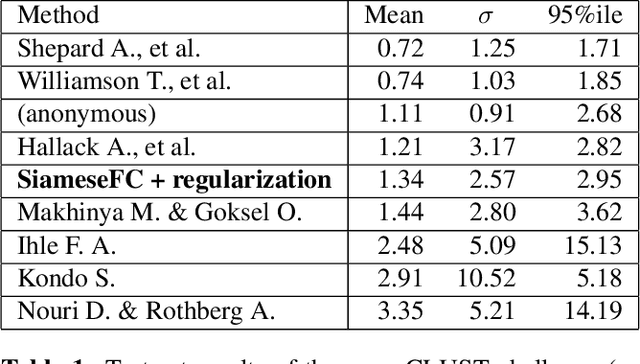
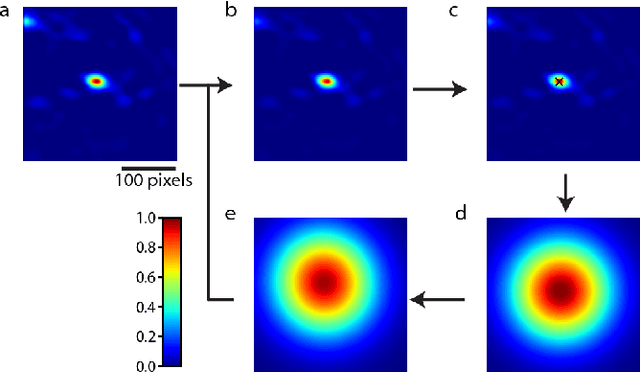
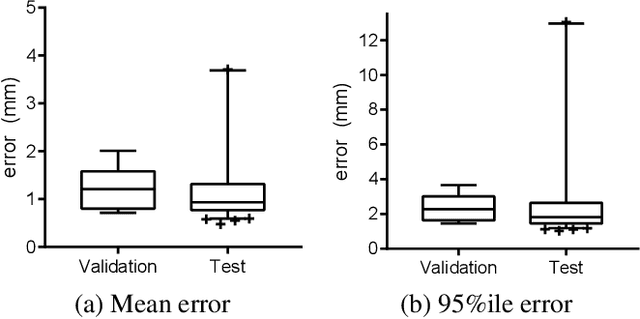
Abstract:Image-guided radiation therapy can benefit from accurate motion tracking by ultrasound imaging, in order to minimize treatment margins and radiate moving anatomical targets, e.g., due to breathing. One way to formulate this tracking problem is the automatic localization of given tracked anatomical landmarks throughout a temporal ultrasound sequence. For this, we herein propose a fully-convolutional Siamese network that learns the similarity between pairs of image regions containing the same landmark. Accordingly, it learns to localize and thus track arbitrary image features, not only predefined anatomical structures. We employ a temporal consistency model as a location prior, which we combine with the network-predicted location probability map to track a target iteratively in ultrasound sequences. We applied this method on the dataset of the Challenge on Liver Ultrasound Tracking (CLUST) with competitive results, where our work is the first to effectively apply CNNs on this tracking problem, thanks to our temporal regularization.
 Add to Chrome
Add to Chrome Add to Firefox
Add to Firefox Add to Edge
Add to Edge